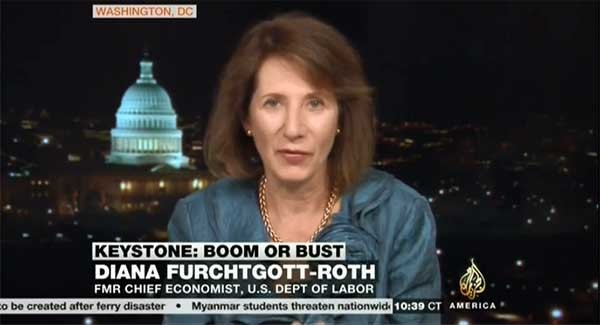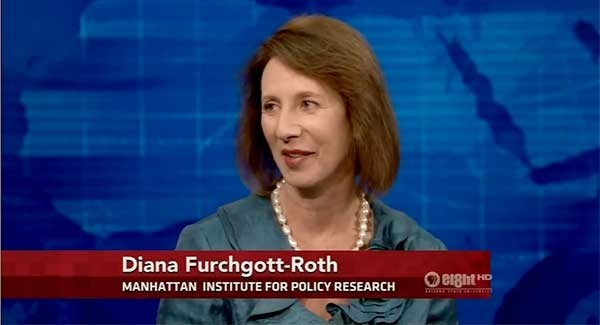RealClearMarkets President Obama s Capital Gains Tax Envy
Post on: 20 Апрель, 2015 No Comment

President Obama's Capital Gains Tax Envy
In his State of the Union Address Tuesday evening, President Obama repeated his call for tax increases on high income earners-even though some of these same tax increases failed to get through Congress in 2010 when the Democrats controlled both Houses.
This is part of the politics of class warfare that has become the defining feature of Mr. Obama’s presidency.
American manufacturing has fled offshore due to some of the highest corporate tax rates and the most stringent regulations in the world. Millions of jobs have gone offshore.
Mr. Obama is desperate to get manufacturing to return, so he proposed a hodge-podge of temporary tax incentives, such as incentives for solar, wind and biomass, full expensing of investment in 2012, and a manufacturing community tax credit for areas with high unemployment.
To raise revenue, he wants to raise taxes on oil companies and banks, disallow deductions for moving offshore, and impose a minimum tax on multinationals. and give companies a credit for moving back to America.
Temporary tax cuts generally haven’t worked, because businesses aren’t stupid, and they know the provisions won’t last. It would have been better to lower all corporate taxes and allow permanent expensing of all investment, without picking winner and losers, in order to bring America’s corporate tax rate in line with global rates.
By calling for millionaires to pay a 30 percent effective tax rate, Mr. Obama is trying to do for American capital what happened to American manufacturing. Rapidly growing capital markets in Asia want our capital, just as they have taken our manufacturing.
A 30 percent effective tax rate requires an increase in long term capital gains tax rates from the current 15 percent rate. Some upper-income individuals, such as Warren Buffet, have lower average tax rates because of the high share of income they derive from the taxation of capital gains and stock dividends at the preferential 15 percent rate.
The president argued that it was common sense that billionaires pay taxes at least at the same rate as their salaried secretaries. He referred specifically to Warren Buffet’s secretary, who was seated in the gallery with Michele Obama.
But a look at estimated average tax rates for 2011, as reported by the staff of Congress’s Joint Committee on Taxation, shows that millionaires do pay higher tax rates than secretaries. The staff came up with average tax rates by dividing taxes owed by adjusted gross income.
Taxpayers with adjusted gross incomes between $50,000 and $75,000 pay a federal income tax rate of 4.5 percent, compared with 22 percent for those earning over $1 million. Including payroll and excise taxes, middle income Americans pay an average rate of 12.8 percent, compared to 24 percent for millionaires.
But even though millionaires pay tax at a higher rate than the middle class, facts often don’t matter in tax policy discussions. The Alternative Minimum Tax, a parallel tax system set up to catch high-income earners, was implemented in 1970 after then-Treasury Secretary Joseph Barr reported to Congress that 200 wealthy taxpayers had paid no income tax. Over 40 years later, the AMT now affects millions of middle-class taxpayers.
Republican presidential candidate Mitt Romney’s average 14 percent tax rate has added fuel to the tax-policy fire-although Massachusetts Senator John Kerry’s 13 percent tax rate did not appear to arouse the same angst when he was the 2004 Democratic presidential candidate.
In order to raise the average tax rates of taxpayers like Warren Buffet and John Kerry, who have substantial amounts of capital gains and dividends, Congress has to raise capital gains taxes from their long term 15 percent rate. This is because much of these taxpayers’ income is in capital gains or dividends.
That has negative effects on the economy by reducing U.S. investment or driving it overseas. If firms pay more in capital gains taxes, they would make fewer investments, especially in the businesses or projects that most need capital, and they would hire fewer workers.
Higher capital gains taxes would reduce economic activity, especially financing for private companies, innovators, and small firms getting off the ground. Taxes on U.S. investment would be higher compared to taxes abroad, so some investment capital is likely to move offshore.

There are good reasons for taxing capital gains and dividends at lower rates than earned income. First, capital gains have a lower tax rate to encourage the risk- taking involved in investment. Investors supply the financial capital essential for investments that spur innovation, improve productivity, and expand capacity.
Second, dividend income has been taxed before at the corporate level. The statutory corporate tax rate is 35 percent, although effective tax rates vary by firm, depending on the amount of plant and equipment purchased, among other factors. The tax is taken out of gains distributed to shareholders. A 20 percent effective corporate tax rate on top of a 15 percent individual tax rate means the capital is taxed at 32 percent.
Finally, a portion of the gain comes from inflation. Many people hold on to capital for years before selling it, and some of the price increases are due to inflation. Rather than calculating the inflationary gain from each stock holding, Congress decided to tax such gains at a lower rate.
In addition to raising taxes on capital gains, Representative Sander Levin, a Michigan Democrat and the ranking member on the House Ways and Means Committee, is reintroducing his bill from the 111th Congress to raise taxes on carried interest profits from private equity firms and investment partnerships. These profits have been taxed at long-term capital gains rates for decades.
Carried interest is a profit share, often in the range of 20 percent, received by general partners on the sale of a capital asset, whether it is a shopping center or a company. The remainder of net profit is distributed among limited partners, generally public and corporate pension funds, charitable foundations, endowments, individuals, and other equity funds.
Carried interest on real estate, private equity or venture capital investments is treated as a capital gain because it represents the profit earned from a capital asset whose acquisition and sale involves some risk. It is not guaranteed income.
Many politicians say that carried interest bears greater resemblance to wage and salary income than to capital gains, so should be taxed at ordinary rates. But they miss the point: capital gains treatment is afforded to owners to encourage investment. If you own the asset and make a profit from its sale, that qualifies your profit for capital gains treatment.
Raising taxes has a populist ring. But with capital mobile in a global economy, it is especially important to ensure that America’s environment is hospitable to investment, so that jobs are created here rather than in London or Shanghai. Populist rhetoric might make President feel fiscally responsible, but tax hikes on capital and investment would harm America’s economy and those who want to get back to work.
Diana Furchtgott-Roth is a contributing editor at RealClearMarkets, a senior fellow at the Manhattan Institute, and a columnist for the Examiner. She is the author of Regulating to Disaster: How Green Jobs Policies Are Damaging America’s Economy (Encounter Books, 2012).














